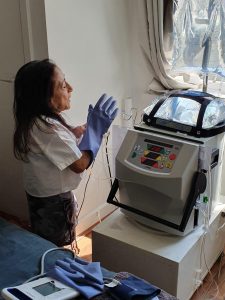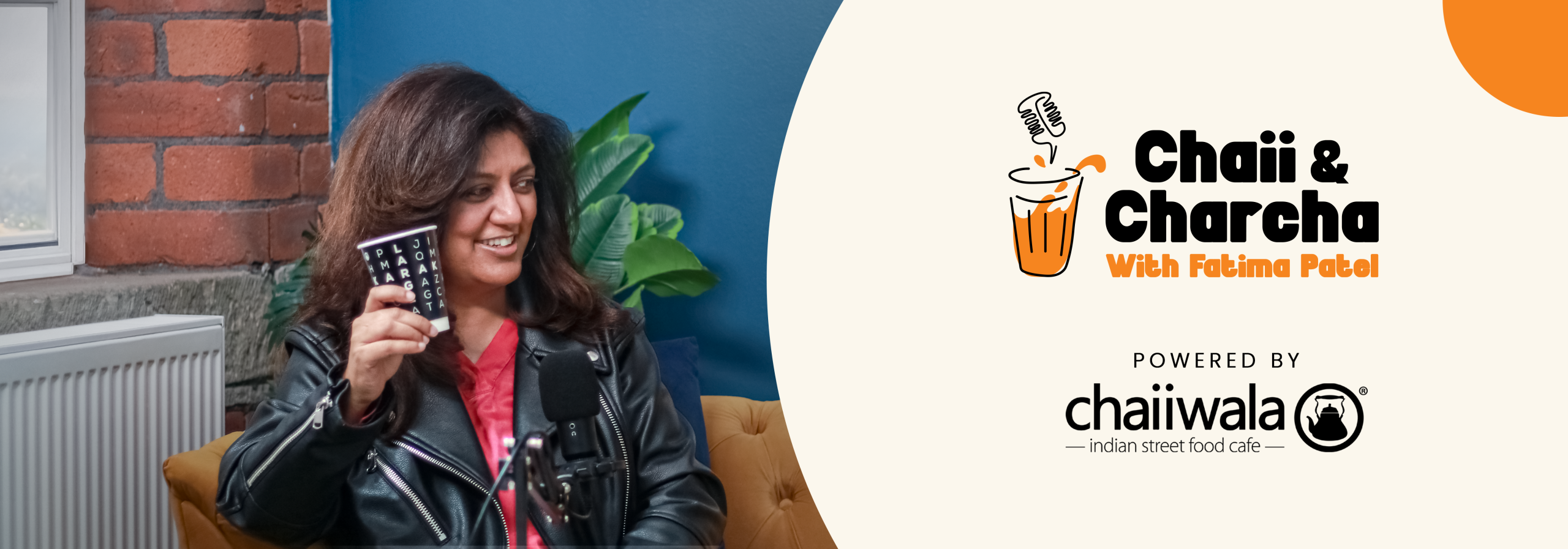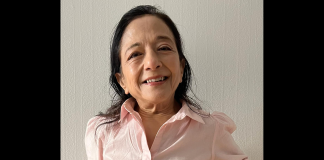More than 30,000 people in the UK are currently on dialysis. On average, patients typically spend three days a week on a dialysis machine, for four-hour sessions, adding up to around 624 hours every year – often for years on end. That’s nearly two full months of every year spent on staying alive.
For most, dialysis is a temporary bridge. But for Sehnaz Hanslot, it’s been a way of life for nearly two decades, during which she’s spent 32,760 hours on dialysis: three times longer than the national average. It’s the equivalent of nearly four full years tethered to a machine.
Today, the African Caribbean Leukaemia Trust (ACLT) is issuing an urgent national call to help tackle the living organ donor crisis, a crisis that continues to rob people like Sehnaz, and many others from Asian, Black, and minority ethnic backgrounds of precious years that could be spent living, not just surviving on dialysis.
Sehnaz’s Story
For over 18 years, Sehnaz has fought a battle many never see, a life tethered to a dialysis machine after both her kidneys failed in 2007. “For me, a day on dialysis is what it feels like for most people waking up and working an eight-hour day. It’s a full-time job,” says Sehnaz.
Sehnaz endures five sessions of home dialysis a week. Each session takes up to seven hours, causing her extreme cold, cramping, and persistent fatigue. Despite being on the National Kidney Transplant Register for 15 years, a match is yet to be found due to the high levels of antibodies in her blood, the result of early blood transfusions. While she was initially told these antibodies would disappear over time, they have remained, making a match exceedingly rare.

Today, thanks to advancements in transplant medicine, there is new hope. With desensitisation treatments now able to reduce harmful antibodies, Sehnaz’s transplant team has recommended finding a living donor. Living donation is often the safest and most effective route to survival for patients with complex medical needs. However, lack of awareness, stigma, and cultural silence continue to prevent life-saving conversations from happening.
A gifted artist, Sehnaz trained at Goldsmiths University and the Slade School of Art, using her work to bring beauty and colour into life despite the constraints of dialysis. A living donor would give her the freedom to bring even more colour into her own life simple joys like painting freely or just enjoying the world beyond her treatment schedule.
“I’ve held on all these years, hoping for a call. Knowing that a living donor could give me a second chance, that’s a light I haven’t seen in a long time,” Sehnaz says. “People think dialysis keeps you going, but it keeps you stuck. I’m surviving, not living.”
The Ethnicity Gap in Kidney Donation
According to NHS Blood and Transplant, kidney donors and recipients are best matched by blood and tissue type, which are more likely to match if they come from within the same ethnic group, making the need for donors from ethnic minorities much more dire.
- Ethnic minorities make up one in seven people in the UK, and they represent more than a third of those waiting for a transplant. Within this group, Asians account for nearly one in five of patients on the transplant waiting list.
- On average, Asian patients wait 27 months for a kidney transplant, which is 6 months longer than their White counterparts, increasing risks to their health and reducing their chances of survival.
- From 2019 to 2024, 87% living kidney donors were White, with 98% of them donating to White recipients. On the other hand, Asian kidney donors made up just 8% of living donors, and only 61% of them donated to Asian recipients.
One of the key factors behind this disparity is the shortage of available donors, and a major barrier contributing to this is family consent, with fewer than a third of Asian families consenting to donation, compared to nearly two-thirds of White families.
When Family Silence Hurts Loved Ones
It’s an easy assumption that a family member would be the primary option to help Sehnaz, but it is not always guaranteed that a family member will be a matching donor, and things become far more difficult when misconceptions and self-serving beliefs are a dividing factor.

Sehnaz has shared her experience of living through this ordeal without the support of her family. “I have been very reticent over the years to discuss why members of my family have not come forward! Because I don’t want to hurt their feelings.
“Over the years, my family’s response has been one of silence. My experience is that when the subject of a living kidney donor has been discussed with people, the expression “It’s a big ask” comes up more than I care to mention, unlike heart failure and other organ failures, which are considered life-threatening.
“When a person with Renal Kidney failure is faced with the difficult circumstances of antibodies, because of blood transfusions, the offer of a kidney from a deceased donor is a needle in a haystack.” This is where a kidney from a living donor becomes the best option.
There is a general misconception that a person with kidney failure can carry on living a relatively healthy life on a dialysis machine, but really, dialysis is a short-term solution.
A Call for Compassion and Action
Orin Lewis OBE, the CEO of ACLT and Chair of NBTA, said: “Sehnaz’s story is not just hers alone; it represents thousands in the UK and worldwide who endure unimaginable challenges while waiting for a donor. Living kidney donation is a chance to offer not just survival, but freedom from the dialysis machine, the pain, the fatigue, and the isolation.
“Her courage to share this journey offers an opportunity for the public to understand the stark reality of life on dialysis and how a single, selfless act could change everything.”
Through Sehnaz’s story, ACLT is calling for a cultural shift: open conversations, informed choices, and urgent compassion. Sehnaz wants to break the silence and is desperately hoping for a donor. In her own words: “Just to be able to go to the coast and sit looking at the sea, drinking a cup of tea… now that would be living.”
One stranger, or relative, could give thousands like her a second chance at life.
For further information, or to become a living kidney donor, please visit: https://aclt.org/donate/organ-donation/




